
By Nellie Huang (www.wildjunket.com)
Nellie is a high-profile travel writer and blogger with a special interest in unusual destinations and experiences. She has travelled to over 140 countries across 7 continents, including the Arctic and Antarctica. Her work has appeared on BBC Travel, CNN and Lonely Planet.
Dubbed “Roof of the World”, Tibet is perched on the highest plateau in the world. The autonomous region is located in the Himalaya mountains, bordering India, Nepal, Myanmar and Bhutan. The capital city Lhasa itself stands at 3,550 metres (11,647 ft) above sea level, and Everest Base Camp is at an astonishing 5,088 metres (16,693 ft).
Because of its lofty heights, the natural landscapes of Tibet can impress even the most hardened traveller. Imposing snow-peaked mountains tower over vast plains that are dotted with Buddhist stupas and colourful prayer flags. Spearmint lakes weave their way through winding valleys, flanked by icy glaciers and centuries-old monasteries.
But amidst the stunning natural landscapes that surround, it is the resilience and strength of the Tibetan people that truly move me. Tibet today is one of the most repressed and closed societies in the world. Under the watchful eye of China, its people continue to suffer from a lack of basic human rights and democratic freedom.
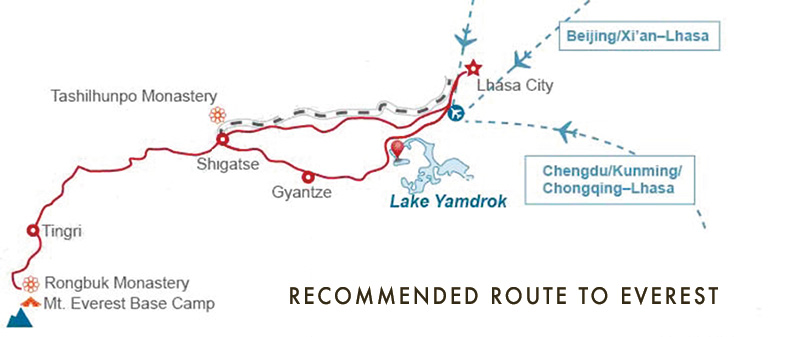
Table of Contents
A Short History of Tibet — Roof of the World
In 1950, Tibet was invaded by communist China, which seized control by force. Tibetans attempted to take back their country in an enormous uprising in March 1959, but they were crushed with brutal force. The young Dalai Lama was forced to flee to India, where he established a democratically based shadow Tibetan government.
Back in Tibet, the Chinese adopted brutal repressive measures against the Tibetans. They destroyed thousands of monasteries and banned the practice of religion. Although the ban was lifted in 1976, protests in Tibet continue until today. The current Dalai Lama remains in exile, but he has won widespread international support for his Tibet independence movement.
Give the ones you love wings to fly, roots to come back and reasons to stay… ~Dalai Lama~
Despite China’s attempt at mass modernisation, Tibet remains a spiritual place rich in traditional culture and religious faith. Fifty years of oppression and religious control under China’s iron fist have miraculously failed to dull the Tibetans’ devotion and belief.
These days, you might find kitsch Chinese neon signs, modern retail stores and fast-food chains in Lhasa and some parts of Tibet. But it is just as common to find prayer halls full of chanting monks, streets lined with prayer wheels, and magnificent monasteries painted in gold. At sacred spots dotted around Tibet, you will still find devout pilgrims prostrating in koras, circumambulating the religious site.
In a bid to isolate Tibet from the world, China has restricted tourism to Tibet ever since the 1960s. Independent travel is not allowed, and foreign travellers need to prearrange a tour in order to enter Tibet. While this makes Tibet hard to reach for independent travellers, its outstanding beauty and spiritual nature make all the hurdles worthwhile.
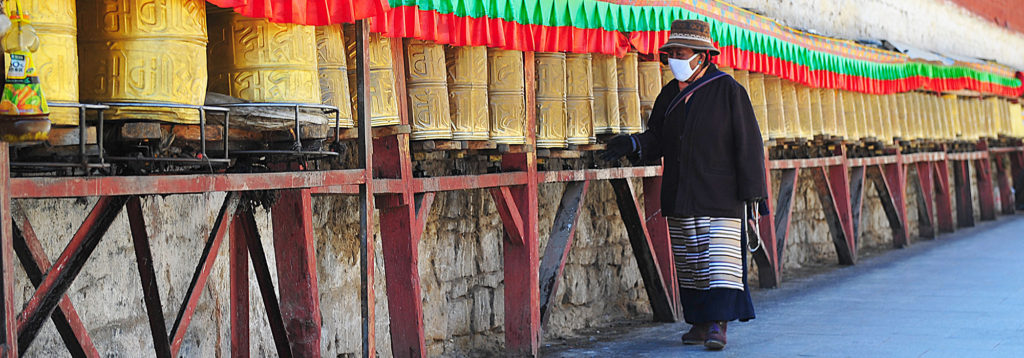
Join me on a journey through Tibet, starting from the spiritual and administrative capital of Lhasa. Visit the former home of Dalai Lama, watch monks debate at the famous Sera Monastery, and take the high road to Everest Base Camp.
Witness some of the most spectacular high-altitude landscapes in the world, and meet some of the most resilient people you will ever come across. Prepare for a journey that will get you high (no pun intended), awake your senses and stir your soul.
Lhasa, the Tibetan Capital
Rising atop Marpori (Red Mountain) at an altitude of 3,700 metres (12,139 ft), the city of Lhasa stands high above the Lhasa Valley. The name Lhasa translates to mean “Place of the Gods” in the Tibetan language—and it’s easy to see why once you’re here.
Since the mid-17th century, Lhasa has been the religious and administrative capital of Tibet and the spiritual heart of Tibetan Buddhism. Even today, it is here in Lhasa that most visitors start their journey in Tibet.
Lhasa is a melting pot of monasteries, temples, food & crafts, and a palace
While independent travel is not allowed in Tibet, Lhasa is an exception. Travellers are free to wander around Lhasa’s markets, visit ancient squares and get lost in the maze-like old town unaccompanied. A guide is only necessary when visiting tourist attractions, such as monasteries and temples. It is always wise to arrive in Lhasa a few days before your tour in Tibet starts. You’ll not only be able to explore Lhasa on your own and chat with locals, but you will also have some time to acclimatize.
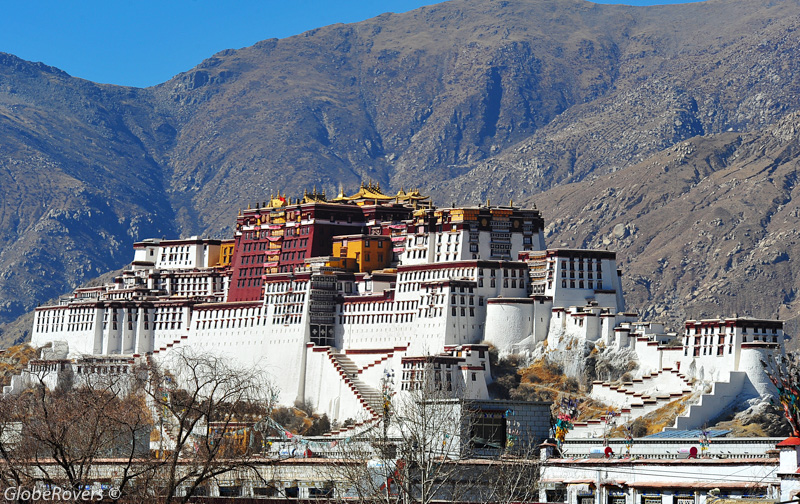
With Lhasa located at such a high altitude, it is common to suffer from AMS (Acute Mountain Sickness) when flying into Lhasa. Some feel light-headed and nauseous, while others find themselves short of breath, with a pounding headache. Give yourself plenty of time to rest in Lhasa before you start exploring and remember to hydrate.
Once you are well-rested, begin your exploration of Lhasa at the Jokhang Temple, a stunning complex with massive prayer halls and stupas. Tibetans, in general, consider Jokhang the most sacred and important temple in Tibet. So much so that there is an ancient Tibetan saying that goes, “No journey to Lhasa is complete without a visit to Jokhang Temple”.
Dating back to the seventh century, Jokhang is the oldest Buddhist temple in Tibet. The beautiful ancient temple, painted in deep hues of red and gold, is an important pilgrimage site for the Tibetans. You’ll often see line upon line of pilgrims waiting outside the temple every day, praying and prostrating themselves with incredible devotion.
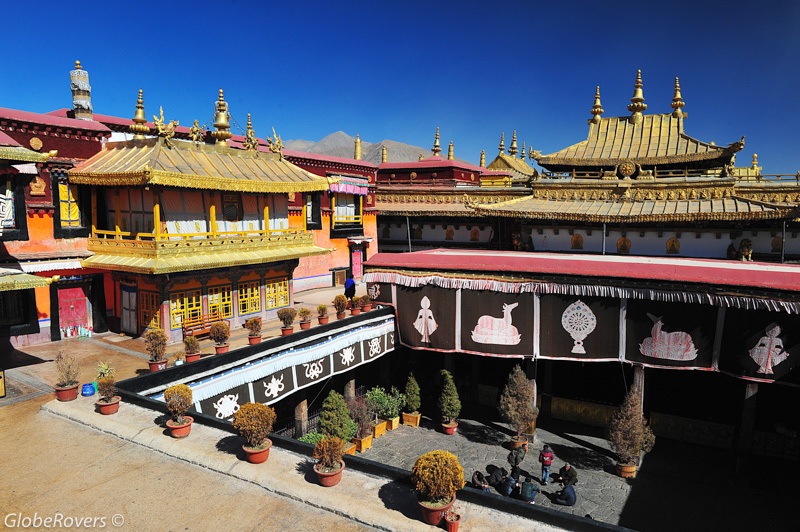
Jokhang is located right on Barkhor Square, the main square and palpitating heart of Lhasa. The square has been a focus for violent political protest on several occasions, notably in 1998 and most recently in 2008. The March 2008 Tibetan uprising was a series of protests and demonstrations against the Chinese government’s persecution of Tibetans. It was held to commemorate the 49th anniversary of the 1959 Tibetan uprising when the Dalai Lama escaped from Tibet.
These days, Barkhor Square is still guarded by riot-squad vehicles, but the atmosphere is much more relaxed. The square plays host to a market, where street vendors sell everything from fresh produce to incense. The market remains traditional and authentic and you can watch as locals haggle and shop for daily products.
Next, make a beeline for the world-renowned Potala Palace, the former residence of the Dalai Lama. This iconic complex is a symbol of Tibetan Buddhism and plays a pivotal role in the traditional administration of Tibet. To get up to the palace, you will need to climb a few hundred steps, which becomes a challenge for anyone at this altitude. But once you reach the top, the view from the palace makes it worth your while.
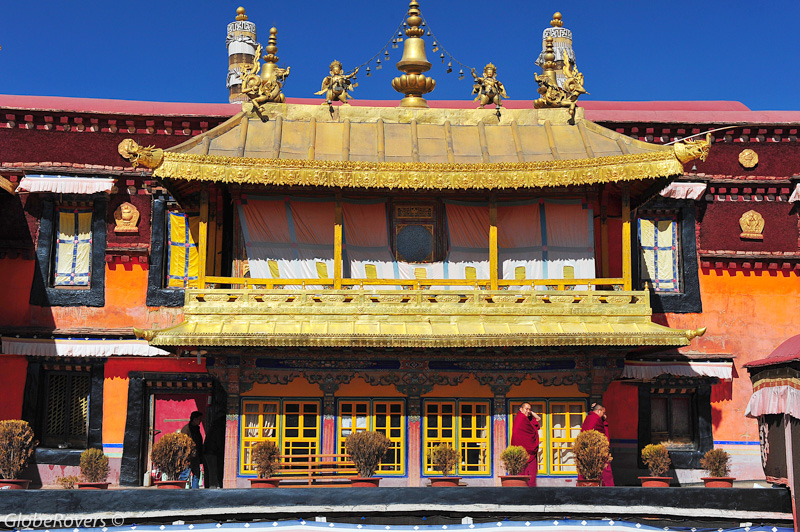
Tracing its roots back to the 7th century, the Potala Palace was the home of all the Dalai Lamas until the 14th (current) Dalai Lama fled to India during the 1959 Tibetan uprising. Today the palace has been transformed into a museum and UNESCO World Heritage Site.
The Potala Palace is an absolutely impressive complex with hundreds of chambers and thousands of artefacts and exhibits. It takes a full day to see them all. Prepare to be transported back in time, as you wander the hallways and hear stories from your guide while the chanting of monks echoes in the far distance and the aroma of incense fills the air.
Those who have seen the movie Kundun—which features the true story of the current Dalai Lama—might find certain parts of the palace familiar as it was replicated in the biographical film.
From there, continue your exploration in Norbulingka Palace, located a short distance to the southwest of Potala Palace. The complex was used as a summer palace as well as the administrative and religious centre for the successive Dalai Lamas from the 1780s till 1959 after the escape of the 14th Dalai Lama.
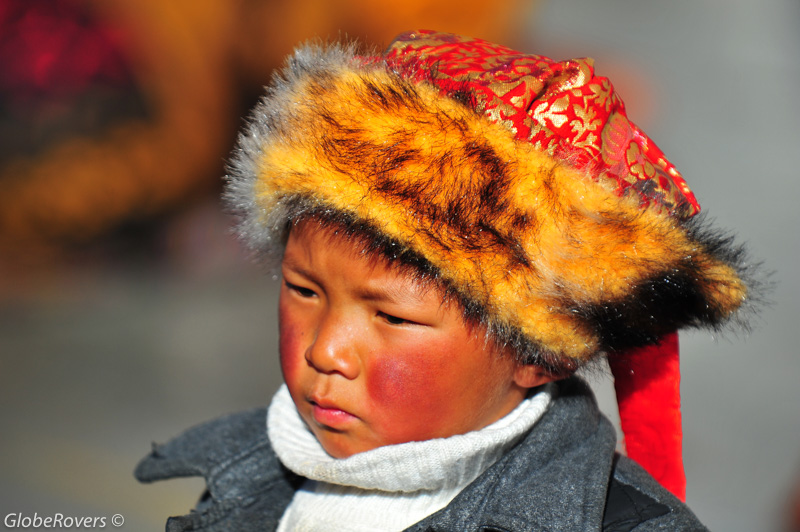
Also a UNESCO World Heritage Site, Norbulingka is best known for its sprawling garden. Covering an area of around 36 hectares (89 acres), the lush garden is lauded as the largest man-made garden in Tibet. In summer and autumn, this garden is the hosting ground for all sorts of festivities and musical performances.
After visiting Lhasa’s most popular sights, head on to the Tibet Museum to browse through interesting exhibits and heavy Communist Party propaganda.
Starting with the prehistory of Tibet, the multiple halls cover everything from Tibetan weapons and musical instruments to folk handicrafts and fine ancient thangka (Tibetan sacred art).
Hire a handheld audio self-touring device for 10 RMB (US$1.50)—remember to bring your passport as a deposit.
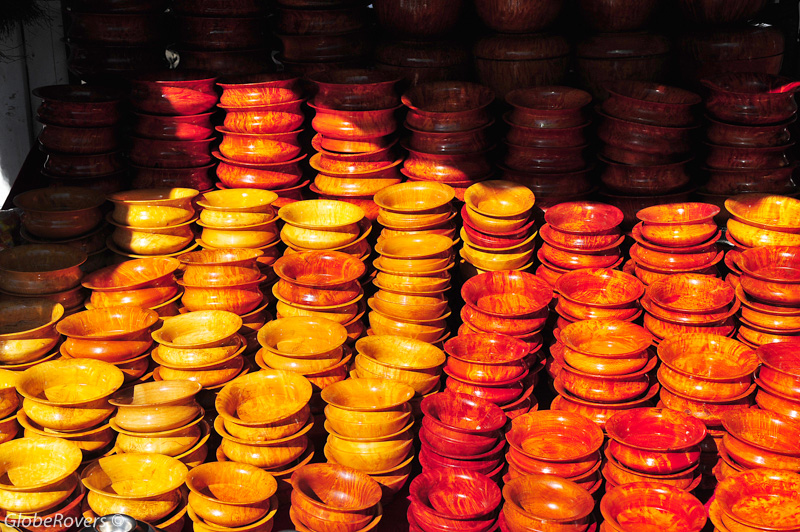
Monasteries outside Lhasa
On the outskirts of Lhasa stand the “three great seats”—three of the most important monasteries in Tibet—the Drepung, Ganden and Sera monasteries.
Erected on the Gambo Utse Mountain just five kilometres from Lhasa, Drepung Monastery is the largest of all the monasteries in Tibet. It was once the largest monastery in the world, housing as many as 10,000 monks in the 1930s. Founded in 1416, Drepung Monastery was the main seat of the Gelupa school (a dominant sect of Tibetan Buddhism) and it was known for the high standards of its academic study.
Three of Tibet’s most significant monasteries are a short drive outside the city.
Almost half of the old Drepung Monastery was destroyed after the Chinese invaded Tibet, though luckily the main buildings including the four colleges, the Tsokchen and the Dalai Lamas’ residence were preserved. The monastery sprawls across a large area, with steep steps and slopes weaving their way around the buildings. Take your time to climb those stairs and make sure you reach the largest prayer hall, where you might get the chance to see hundreds of monks chanting their prayers. The spiritual atmosphere here is palpable.
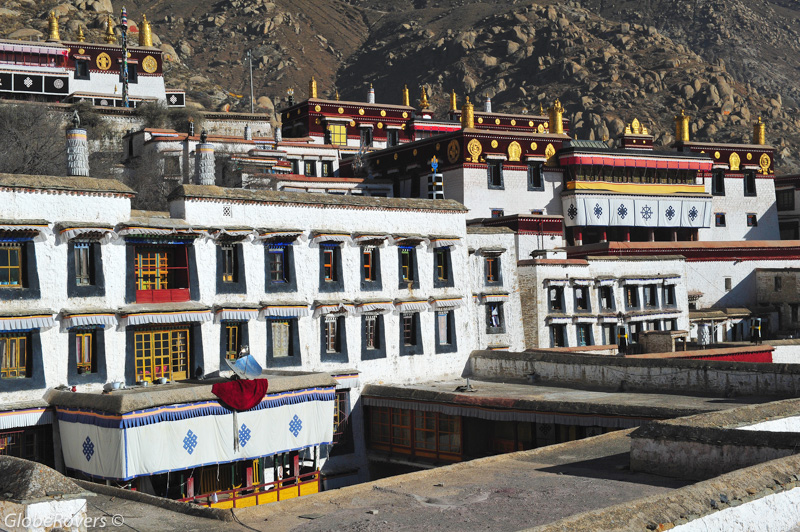
The next monastery, Sera Monastery, is also a renowned place of learning, where hundreds of scholars trained and attained fame in the Buddhist world. But these days it is better known for its display of a long-standing Tibetan tradition: the monks’ debate.
In Tibetan monasteries, monks often carry out animated debates for a better understanding of Buddhist philosophies. But these debates are usually not open to the public, except at Sera Monastery. The monks’ debate at Sera Monastery takes place around 3-5pm every day and everyone is welcome to participate.
Seeing red-robed monks gesturing vigorously and discussing their philosophies out loud is an incredibly eye-opening experience. The debates are punctuated with a lively atmosphere as monks clap after each question and strike their palms against one another. This authentic experience is often the highlight for those travelling in Tibet, so you don’t want to miss it.
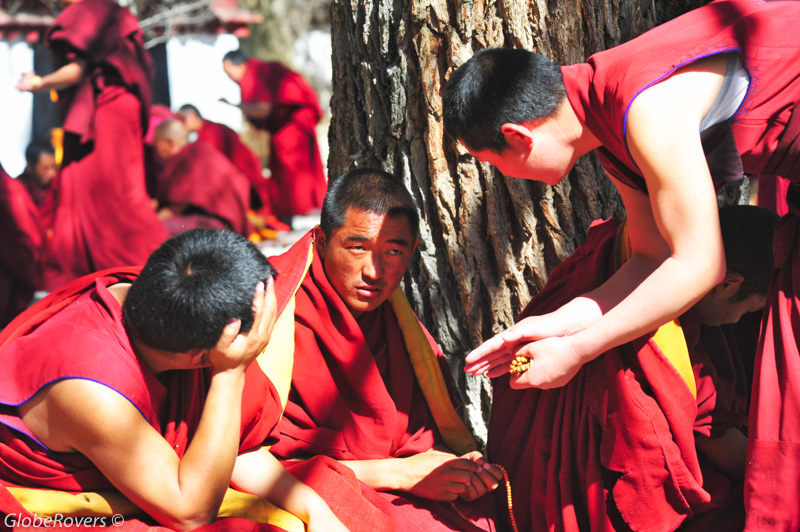
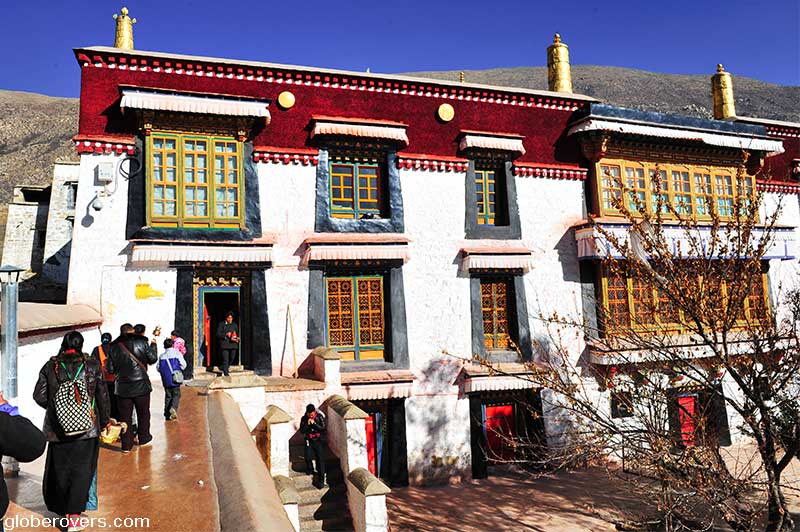
The third monastery, Ganden Monastery, is located about 50 kilometres (31 mi) east of Lhasa. Founded in 1417, Ganden Monastery lies in a hilly natural amphitheatre. Two koras (pilgrim circuits) around the monastery offer astounding views over the braided Kyi-chu Valley. You will probably see more pilgrims here than elsewhere in Tibet.
Sadly, the monastery was destroyed in 1959, but it has since been partially rebuilt and extensive reconstruction is still underway. Ganden’s main assembly hall is a white building with gold-capped roofs. The main chapel contains many gilded images of Tsongkhapa, the founder of Ganden. It is said that around 400 monks now study in Ganden.
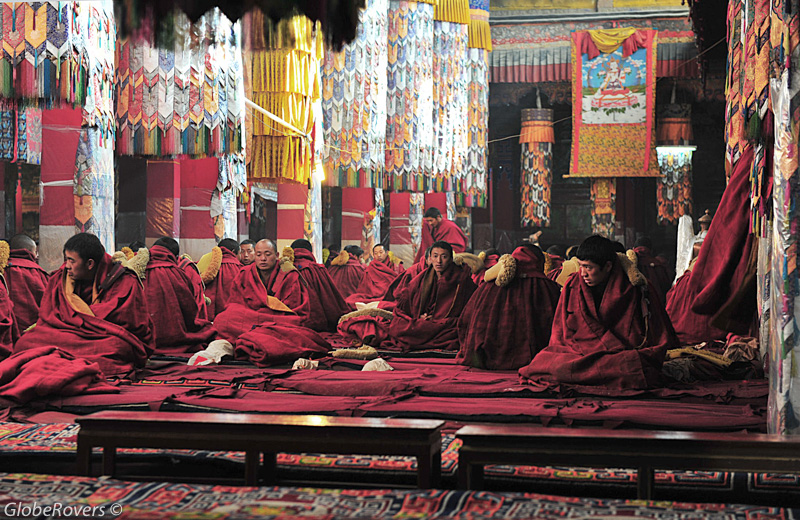
Along the Tibetan Plateau
From the outskirts of Lhasa, it is a 500-kilometre (311 mi) journey across the Tibetan Plateau to reach Everest Base Camp. Get ready for a visual feast, as you traverse some of the most spectacular landscapes in the Himalayas. The journey itself is almost as worthwhile as the destination.
The Tibetan Plateau (area of 2,5 million km2) is the world’s highest plateau.
It takes one or two full days of driving to criss-cross the Tibetan Plateau, the world’s highest and largest plateau. The scenic route first whisks you past barley fields and time-warped villages then lead you up craggy cliffs topped with ochre stupas, before winding around pristine turquoise lakes. Drive alongside winding valleys, across vast grasslands and lush colourful meadows while taking in dramatic mountain views.

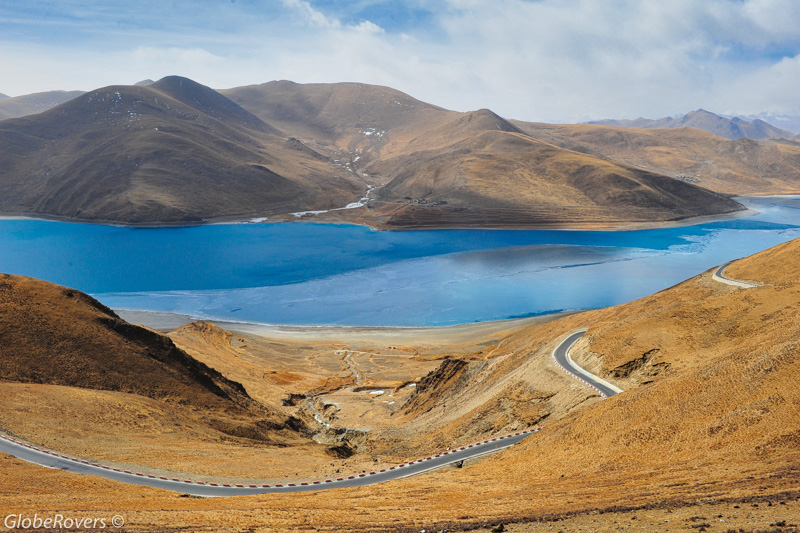
Make a stop at Yamdrok Lake, a naturally stunning lake with spearmint blue waters surrounded by jagged snow peaks. According to Tibetan legends, Yamdrok Lake is the turquoise earring that a goddess scattered into the waters before ascending to the heavens. Only on a map can you see why: the shape of Yamdrok Lake genuinely resembles an earring affixed to a mountain range.
Yamdrok Lake is easily the most popular tourist site in Tibet. You will most likely find tourist touts offering photo opportunities with their yaks draped in colourful hides or Tibetan Mastiff dogs dressed in ridiculous-looking tutus. Avoid these tourist touts and instead, dip your toes in the chilly waters of Yamdrok or simply admire the awe-inspiring landscapes.
As you climb higher and higher into the Himalayas, you will notice the landscapes changing drastically. The terrain gets more rugged and harsh, while the air gets thinner with the gain in altitude. About an hour’s drive from Yamdrok Lake lies the Karola Glacier, a magnificent glacier standing at an altitude of 5,039 metres (16,532 ft) above sea level.

The viewing point just off the highway allows you to get a good look at the impressive glacier as well as the sacred snow-capped mountain nearby. But the wooden boardwalk will bring you right before the glacier, where you can get a sense of its sheer magnitude from up close. A white stupa draped in colourful prayer flags stands at the edge of the walkway, offering a respite for pilgrims.
Continue the drive to Mandak Lake, a narrow lake that snakes its way through the steep ravines. Follow the hiking trails that zigzag around the mountain pass to find secret viewpoints that offer 360-degree panoramas of the valley beneath. Watch the colourful Tibetan prayer flags dance in the air, while feasting on a view of the jade-green waters sparkling beneath you.
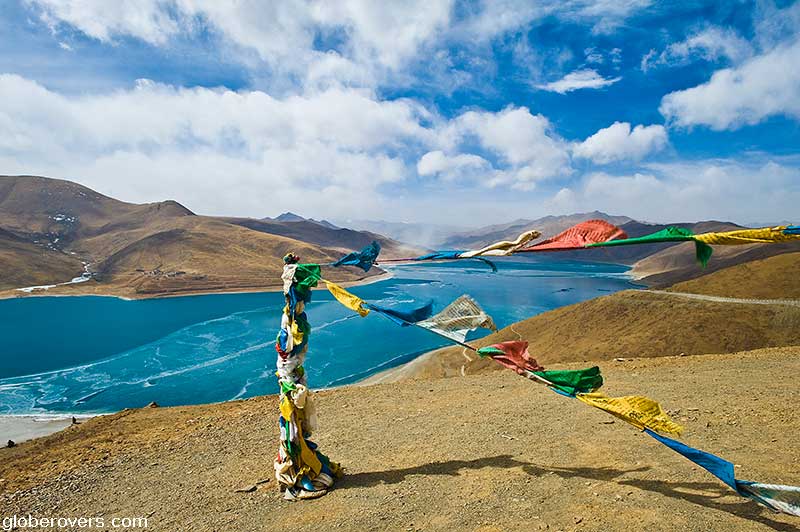
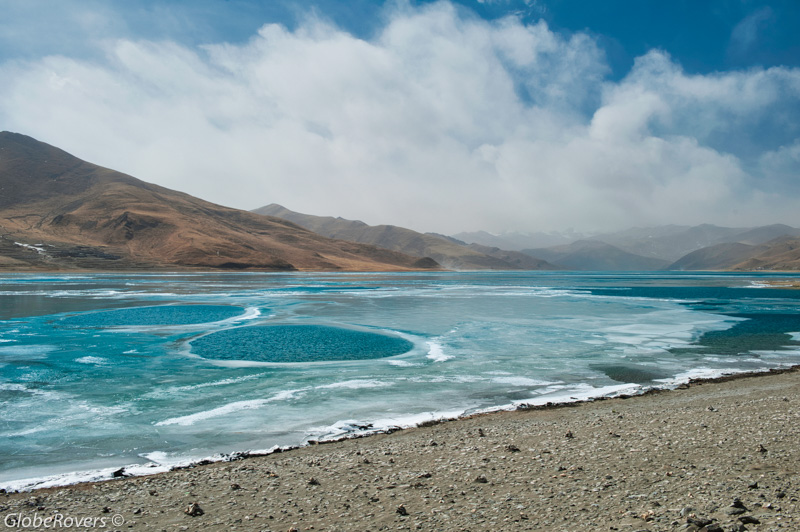
Shigatse
Anyone travelling to Everest Base Camp will pass through Shigatse—but the gateway city is worth a stop and merits an overnight stay.
Shigatse is Tibet’s second-largest city and the traditional capital of Tsang province. It has a history going back more than 600 years and it is the traditional seat of the Panchen Lama, one of the spiritual leaders in Tibet. Today it is a modern city with wide boulevards flanked by Buddhist monasteries and traditional Tibetan architecture.
Shigatse is a major Tibetan Buddhist centre and home to Tashilhunpo Monastery.
The name Shigatse actually means “the fertile land” in Tibetan language, and it’s easy to see how the name came about as you make your approach into the city. From a distance, the silhouette of Shigatse seemingly rises from the lush green fields surrounded by water and rice paddies. In fact, the city sits on a plain at the confluence of the Yarlung Tsangpo and Nyangchu rivers, where Tibet’s most fertile land is found.
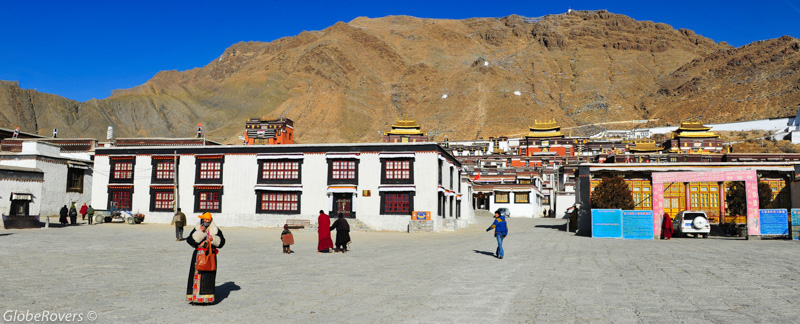
As you drive across the plains, the most conspicuous landmark comes into view: the Shigatse Dzong, a hilltop palace resembling the formidable Potala Palace. It features the same style of architecture, with an imposing white exterior and decadent red roof, as well as an elevated position on top of a steep hill overlooking the city.
Sadly, the fort is empty and only half-restored. Most of what remains was reconstructed in 2007.
The real draw of Shigatse is the Tashilhunpo Monastery, a 600-year-old complex with dozens of monasteries boasting magnificent architectural styles.
Founded in 1447 by the first Dalai Lama, this is the traditional seat of the Panchen Lama, the second most important spiritual figure in Tibetan Buddhism after the Dalai Lama.
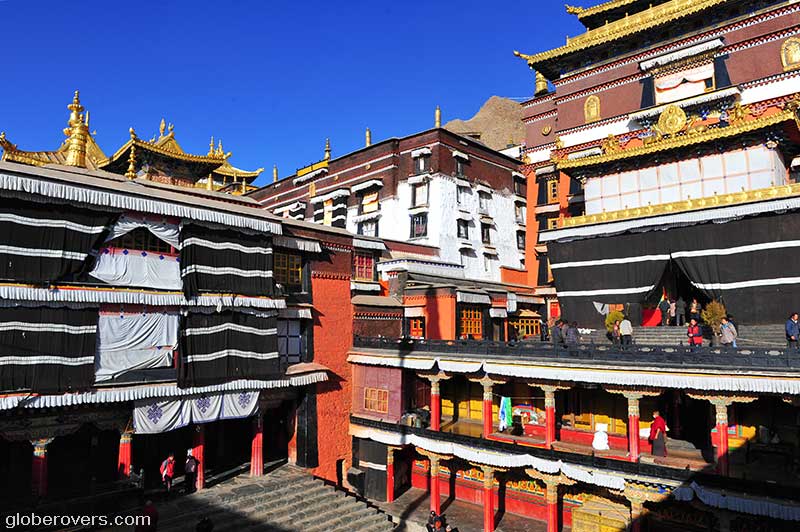
Despite mass destruction by the Chinese in the 1960s, Tashilhunpo thankfully remains relatively unscathed. It is easy to spend hours wandering the cobbled lanes that twist around the ancient buildings, paying respects in the various halls, and admiring oversized thangkas (traditional art).
Covering 70,000 square metres (753,474 sq ft), the monastery is home to around 950 monks these days and continues to be the largest functioning religious institutions in Tibet.
Don’t miss the huge golden statue of the Future Buddha, which is the largest gilded statue in the world. The assembly hall is one of the oldest buildings in Tashilhunpo, and it is dominated by the throne of the Panchen Lamas. The hall is an incredibly atmospheric place, with rows of mounted cushions for monks, and long colourful thangkas hanging from the ceiling.
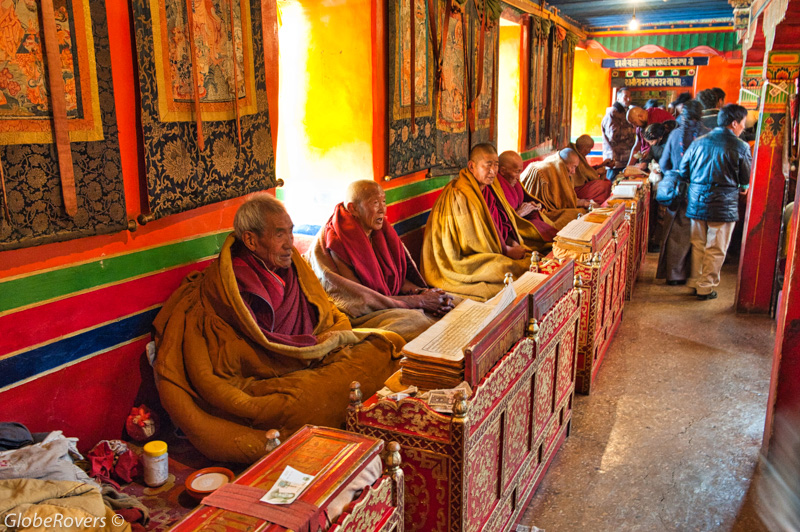
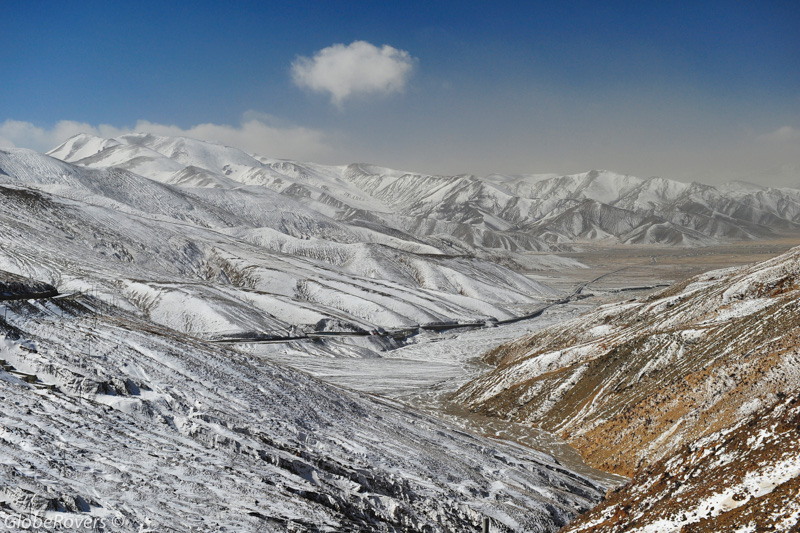
Gyantse
But in recent decades, it has been overshadowed by fast-growing towns such as Tsetang. This is definitely good news for travellers, as Gyantse has retained an appealing provincial charm and laid-back atmosphere. There is a clear absence of fast-food chains and modern boutiques in Gyantse—in their place you’ll find traditional restaurants, quaint inns and antique shops boasting Tibet’s treasures from yesteryear.
Approximately 100 kilometres (62 mi) from Shigatse lies Gyantse, a city with a small-town feel in contrast to Shigatse. Lying on a historic trade route between India and Tibet, Gyantse has long been a stopover point for pilgrims and traders on their journey across the Himalaya. It was once the third biggest city in Tibet, after Lhasa and Shigatse.
Gyantse is located on the ancient trade route through the Nyang Chu valley.
The most prominent sight in Gyantse is the impressive Kumbum, the largest chörten remaining in Tibet. This nine-tier stupa with its 108 gates and 76 chapels and shrines, is located inside the Palcho Monastery, a 14th-century religious complex.
Translated to mean “100,000 images”, the Kumbum’s chapels overlap each other, giving it a ‘tower upon tower’ structure. The chapels have the finest display of Tibetan art in vibrant colour and naturalistic style. The artwork is the last of its kind to be found in Tibet.
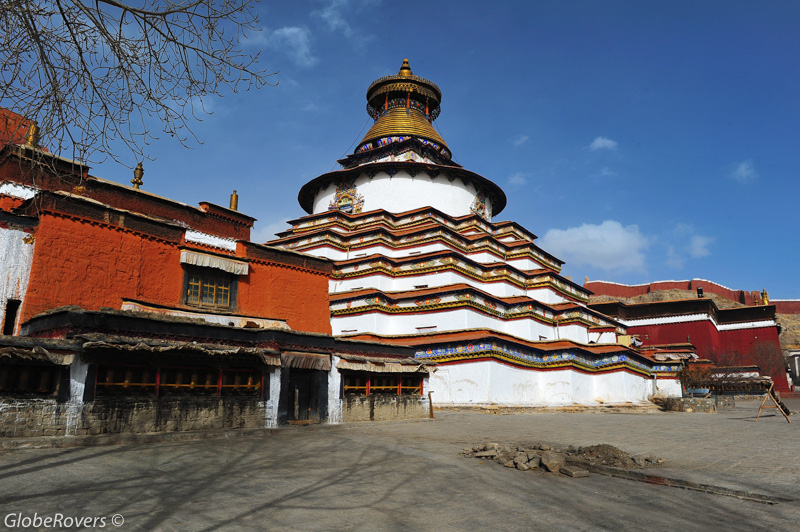
When entering the Kumbum, remember to follow a clockwise route up to visit each chapel on different floors.
Another landmark of Gyantse is the Gyantse Dzong, a fortress perched high above the town on a huge stack of brown rock. Dating back to 1390, the fortress was built to protect and defend the Tsangpo Valley. The fortress was specifically designed to be inaccessible and hard to reach—which becomes apparent as you climb up the hundreds of steep steps that lead up to it.
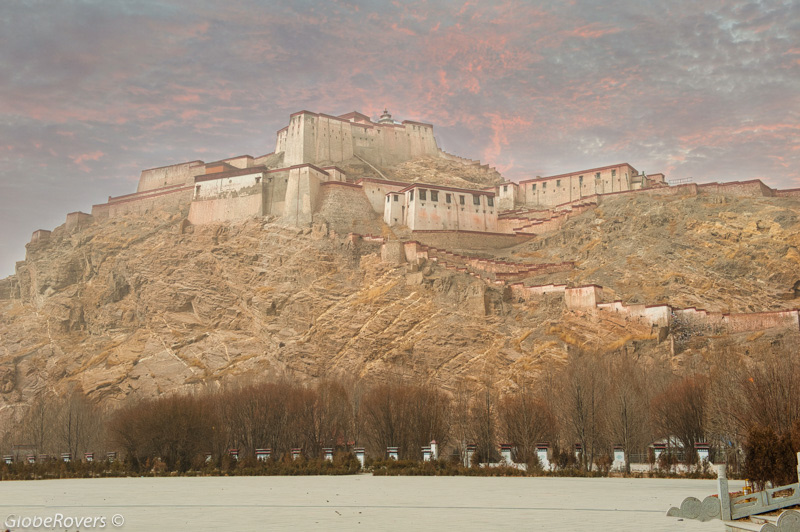
Unfortunately, the fort is largely left in ruins and has yet to be completely restored. The 20-minute climb is still worth your while for spectacular views of Gyantse’s whitewashed town from above. From this vantage point, one can also see the ancient walls of the fortress cutting across the valley and the beautiful Palcho Monastery from a distance.
What sets the Palcho Monastery apart from others is its ties to three different sects of Tibetan Buddhism: the Sakyapa, Kadampa and Gelugpa.
It is the only monastery in Tibet that houses monks from various sects, which was rare back in those days. Even the architecture of the monastery reflects this as you can see different Buddha statues, as well as a fusion of Han, Tibetan and Nepali elements.
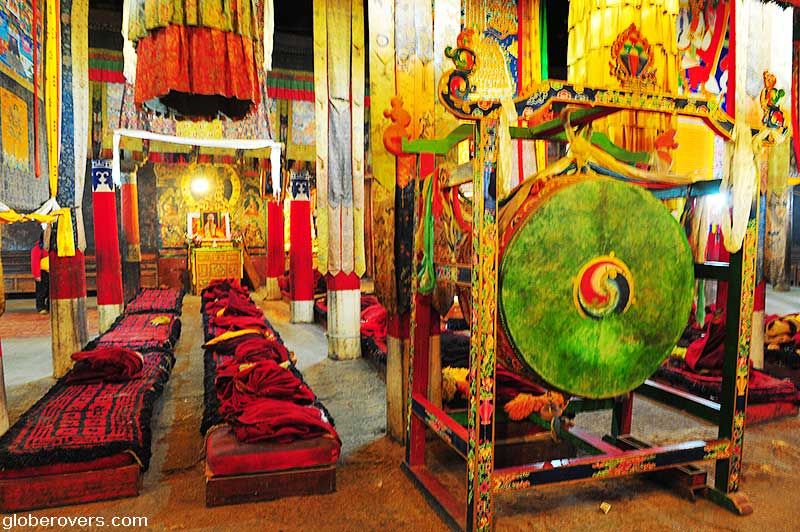
Everest Base Camp
Our journey to Tibet culminates at the legendary Everest Base Camp. The camp traditionally acted as rest stops for mountaineers reaching the world’s highest mountain, but today it draws in thousands of travellers each year. It is, after all, the closest most of us will ever get to the summit of Mount Everest.
At 8,848 metres (29,029 ft) above sea level, Mount Everest is world-renowned as the Earth’s tallest mountain. The Tibetans know it as Chomolungma, meaning “Goddess Mother of Mountains”. But the Royal Geographical Society named it after Sir George Everest, the British surveyor who charted much of India.
Close-up views of Mount Everest are more easily reached from Tibet than from Nepal.
To reach its summit, you will need to be a professional alpinist, with years of experience in high altitude conditions. Thankfully these days, the Everest Base Camp has become an achievable goal for many—especially on the Tibetan side where it is possible to drive all the way to base camp.
In fact, there are two routes to the summit of Mount Everest, and each has its own base camp. One is in Nepal and the other in Tibet. Going to the South Base Camp in Nepal requires a 15-day trek that will push you to your limits and challenge even the fittest traveller. On the other hand, getting to the North Base Camp on the Tibetan side is easy as there’s a road that leads there.
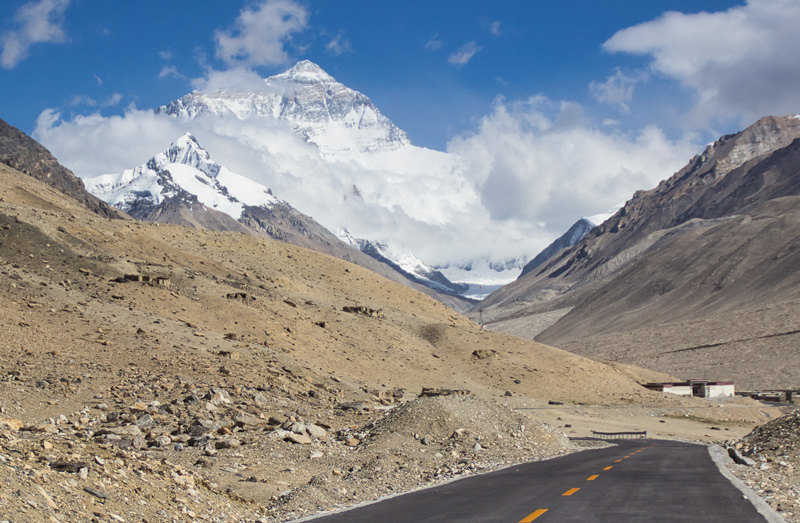
From Rongbuk Monastery, you can choose to continue on the 8-kilometre (5 mi) dirt road by foot or government-owned buses. Be warned: at this altitude, even a short walk can feel like an arduous trek. The air is thin, the wind is powerful, and the sun feels like it is right above your head. Many feel the effect of AMS (Acute Mountain Sickness) here, with symptoms including shortness of breath, dizziness and nausea. Thankfully most tour operators are equipped with oxygen tanks so always ask for help when you need it.
For those who can look past the harsh weather conditions, the otherworldly landscapes are bound to blow you away. With its location at the foot of the Rongok Glacier, the Everest Base Camp is encircled by some of the most iconic peaks on Earth. On days when the skies are clear, the summit of Mount Everest is in full view. It looks so close you feel as though you can touch it with your bare hands. By night, a million stars fill the night sky like a neon-lit canvas—you will never see a clearer sky than that at Everest Base Camp.

NOTE: At the time of writing, the tented camp built for tourists has been closed due to the mounting waste problem. But it is still possible to visit the Everest Base Camp region in Tibet. The ban means tourists can go as far as the Rongbuk Monastery, which is just 4 kilometres (2.5 mi) from Everest Base Camp. Travellers can stay at Rongbuk Monastery Guesthouse instead of the tented camp.
Conclusion
Travelling Tibet comes with its challenges: from bureaucratic tourist visas to altitude sickness. But in today’s modern world, such authentic and untainted places like Tibet are hard to find. Despite China’s forceful attempt to modernise it, Tibet desperately clings on to centuries-old traditions and ancient beliefs.
It is a special place, in both the spiritual and physical sense. But it might not stay this way for long—go soon before it’s too late
☛ Read more: Tibet — Land of the Bhikkhu


